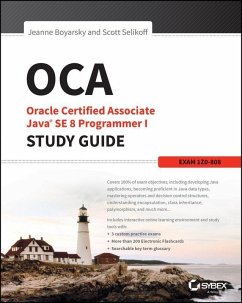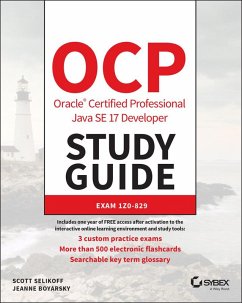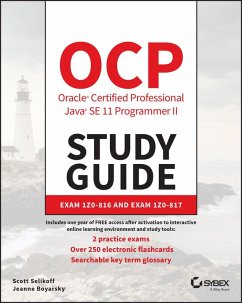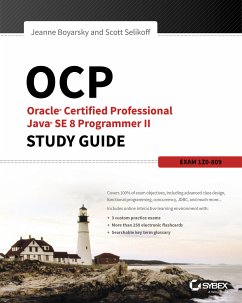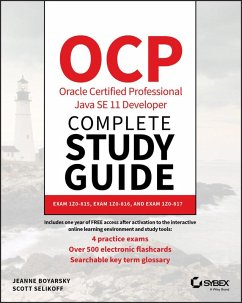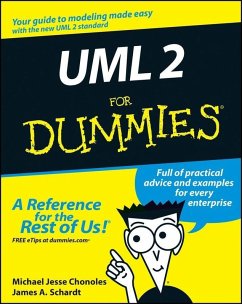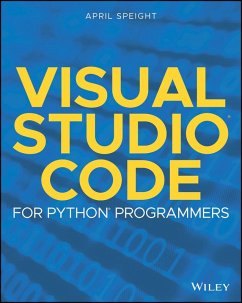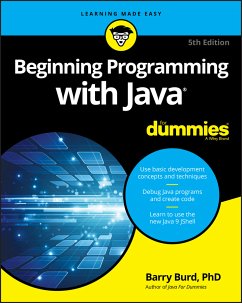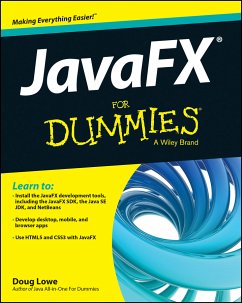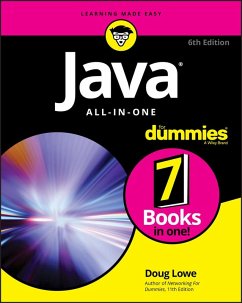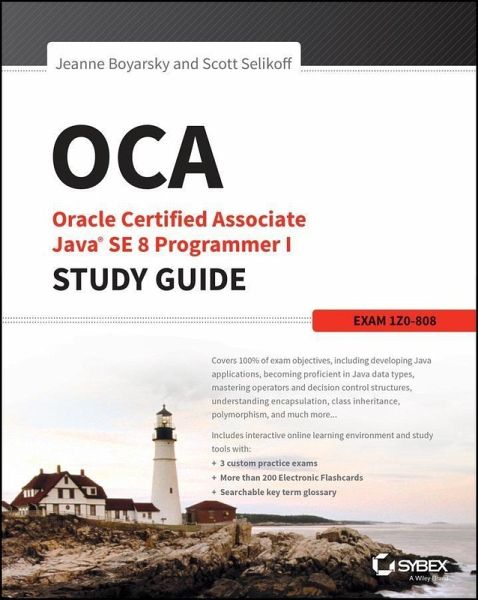
OCA (eBook, PDF)
Oracle Certified Associate Java SE 8 Programmer I Study Guide: Exam 1Z0-808
Versandkostenfrei!
Sofort per Download lieferbar
42,99 €
inkl. MwSt.
Weitere Ausgaben:

PAYBACK Punkte
0 °P sammeln!
Full coverage of functional programming and all OCA Java Programmer exam objectives OCA, Oracle Certified Associate Java SE 8 Programmer I Study Guide, Exam 1Z0-808 is a comprehensive study guide for those taking the Oracle Certified Associate Java SE 8 Programmer I exam (1Z0-808). With complete coverage of 100% of the exam objectives, this book provides everything you need to know to confidently take the exam. The release of Java 8 brought the language's biggest changes to date, and for the first time, candidates are required to learn functional programming to pass the exam. This study guide ...
Full coverage of functional programming and all OCA Java Programmer exam objectives OCA, Oracle Certified Associate Java SE 8 Programmer I Study Guide, Exam 1Z0-808 is a comprehensive study guide for those taking the Oracle Certified Associate Java SE 8 Programmer I exam (1Z0-808). With complete coverage of 100% of the exam objectives, this book provides everything you need to know to confidently take the exam. The release of Java 8 brought the language's biggest changes to date, and for the first time, candidates are required to learn functional programming to pass the exam. This study guide has you covered, with thorough functional programming explanation and information on all key topic areas Java programmers need to know. You'll cover Java inside and out, and learn how to apply it efficiently and effectively to create solutions applicable to real-world scenarios. * Work confidently with operators, conditionals, and loops * Understand object-oriented design principles and patterns * Master functional programming fundamentals
Dieser Download kann aus rechtlichen Gründen nur mit Rechnungsadresse in A, B, BG, CY, CZ, D, DK, EW, E, FIN, F, GR, HR, H, IRL, I, LT, L, LR, M, NL, PL, P, R, S, SLO, SK ausgeliefert werden.




